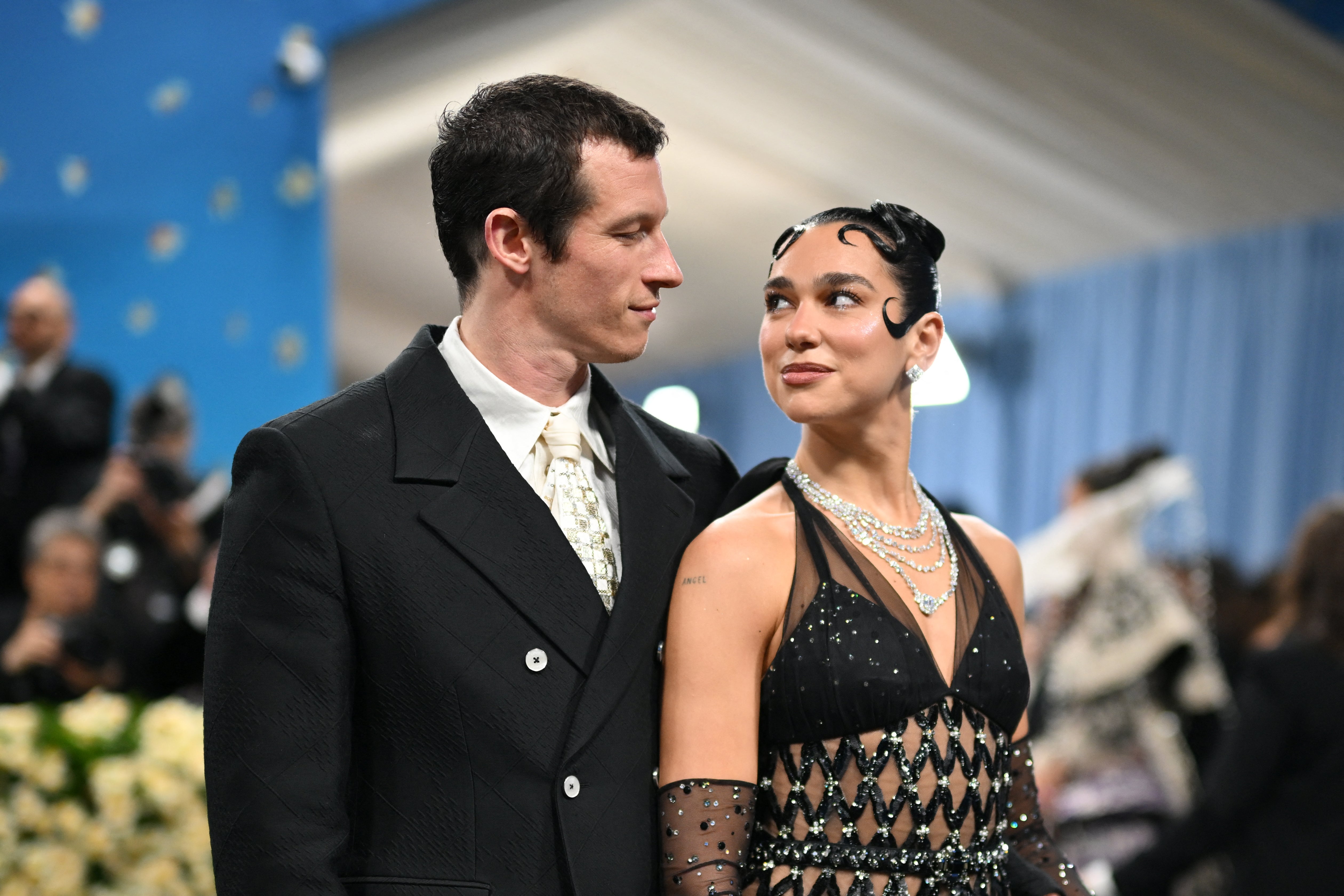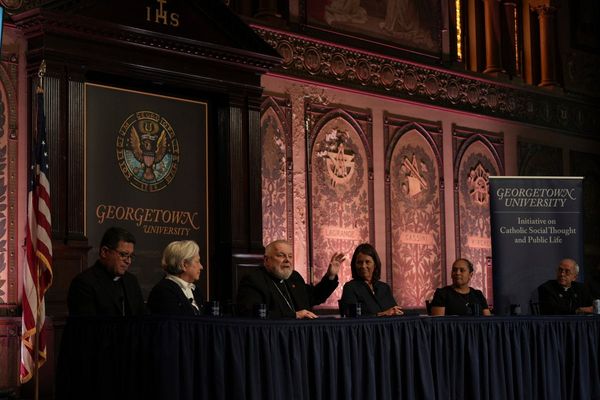
I was lying down in an east London basement with a knife in my right hand. A woman I’d never met before stood over me, shouting: “Cut!”. Still yelling, the woman made a cutting motion in the air with her hands before splashing cold water onto my face. I cut the air above me with the knife… and silently wondered why I had paid £90 for this.
That was the first and last time I visited a shaman. I’d been struggling with a breakup, and a particularly online friend suggested I try a cord-cutting ceremony. It was something she’d heard about on TikTok, an increasingly popular resource for relationship advice where delusion is rife and rationality is not. The idea behind cord-cutting, the friend explained, was that it would enable me to sever any lingering energetic and emotional ties to my ex. This “ritual”, as it’s often described in videos, would allow me to move on for reasons that were never entirely clear, even after I asked my shaman to explain them. “It’s not a magic trick,” she reassured me shortly before circling me with a candle and repeating words in a language I didn’t recognise.
Cord-cutting is one of many popular romantic theories going viral on TikTok. There are several others, united by their spiritual origin and ideological framework revolving around fate, destiny, and other New Age higher powers. Think: soulmates, kindred spirits and karmic relationships.
According to Spark, a trend detection and monitoring tool created by social agency Campfire, related terms that are being increasingly searched for on TikTok include the “twin flame theory”. This idea that one soul can be split into two bodies, creating an intense connection when they finally meet one another and form a romantic relationship, has been hugely popular, with TikTok videos including the term garnering more than 867 million views. Clips on the subject range from explanations to tips on how to find your twin flame, as well as the signs that you’ve already found them.
Then there’s “red string theory”, which Spark estimates has had 284.4 million all-time views on TikTok. Sometimes referred to as “invisible string theory”, this idea originates in east Asian folklore and suggests that all of us are romantically and spiritually connected to another person. But for reasons that are again unclear, “the universe will keep two people apart until the timing is right”, states a voiceover in one TikTok video that has been liked 229,000 times. “When they finally meet, there will be so many coincidences in the timing,” it continues, as classical music plays in the background. “But if one thing will have fallen out of line, they would’ve never crossed paths. But the universe aligns and they will realise everything they went through before they met was just preparing their heart for them [sic].”
These ideas are proliferating beyond TikTok, too. Consider the way Dua Lipa spoke about meeting her fiancé, Callum Turner, in a recent British Vogue interview. “There’s a lot of Sliding Doors moments,” she said, referencing the 1998 Gwyneth Paltrow movie about fated meetings. Lipa went on to speak about how she’d been working at La Bodega Negra in Soho in 2014, and a photograph showed Turner outside the restaurant that same year. Then, in 2020, the pair each had photographs with the same man in the background at a pre-lockdown party. They eventually met at The River Cafe in London after the restaurant’s founder, Ruth Rogers, introduced them. “We have so many friends in common,” Lipa told the magazine, recalling how, in their first conversation, they discovered they were both reading the same book. When asked if all that made the musician think she and Turner were destined to be together, she replied: “One thousand per cent.”

Elsewhere, string theory was also the subject of Taylor Swift’s 2020 song “Invisible String”, believed to be a reference to her partner at the time, Joe Alwyn. In the chorus, Swift sings: “Isn’t it just so pretty to think all along there was some invisible string tying you to me?” Alas, the theory came unravelled when, after six years together, the couple broke up in 2023.
Talk of destiny within the context of romance is nothing new; people have always loved to lean into the idea that finding the perfect partner is a task far beyond their control. It’s reassuring, soothing, and above all, provides a sense of security that you can rely on over and over again when things go wrong. Tell yourself something is happening for a reason, and you’ll feel instantly better. Under this school of thought, every dating disaster can be reframed. A bad date becomes a blessing because it’s deterring you from people who will waste your time. A horrendous breakup becomes a lesson about why someone wasn’t right for you. Even being ghosted is just another way of being led to the love of your life.
But amid a dating landscape that seems to be increasingly plagued by negativity (“dating apps are depressing!”), scarcity mindsets (“all the good ones are gone!”), and hackneyed misandry (“#menaretrash!”), it seems like these ideas are growing in prevalence in both online and offline spaces. “I’ve definitely seen a rise in these concepts,” says Jessica Baum, relationships coach and author of Safe, An Attachment-Informed Guide to Building More Secure Relationships.
“Concepts like ‘twin flames’ or ‘red string of fate’ often romanticise the idea of ‘the one’ – and they’re usually built on intensity.” Yet in many cases, those feelings can be a sign to be wary of someone. “From a relational neuroscience perspective, that intensity can sometimes be the magnetic pull of two people’s familiar traumas interacting,” explains Baum. “People are looking for ‘the one,’ but often our unconscious memories and familiar patterns are more at play when we meet someone and feel an instant pull. That chemistry can distract us from objectively looking at whether the relationship is truly healthy.”
Concepts like ‘twin flames’ or ‘red string of fate’ often romanticise the idea of ‘the one’ – and they’re usually built on intensity
But in today’s dating world, where connections can feel fleeting and superficial at best, or transactional and vapid at worst, many of us are craving intensity more than ever before. “Online dating has made initial connections easier, but those connections often stay surface-level,” adds Baum. The excess of options and lack of deeper emotional connection can leave people feeling defeated. “Concepts like twin flames can keep people in hope and fantasy – as if a bigger plan is always at work. Fixating on ‘the one’ can also be a way to protect ourselves from the present reality of being alone.”
Of course, while reassurance can have positive impacts, in that it can keep us from being too pessimistic about romance, it can also hold us back in the long run. Regardless of your spiritual beliefs, if you want to meet someone, you have to proactively put yourself in scenarios where that can happen. “Believing in a predestined love can discourage proactive efforts like improving communication skills or expanding social circles, as people may wait for the universe to ‘deliver’ their soulmate,” says Dr Madeleine Mason Roantree, a UK-based HCPC and BPS-registered chartered counselling psychologist. “The reality is, relationships are formed through the bond between people, which requires you to show up. So if you have a fantasy that you will be swept off your feet, and then you will know it’s your twin flame, you are likely to wait a while.”
Instead, your time might be better spent being more pragmatic about dating, thinking of love as the pursuit of a connection rather than some sort of otherworldly entity. “The red string or twin flame can be a poetic lens, but don’t let it define your worth or dating success,” Mason Roantree adds. “Obsession with a soulmate can stem from feeling incomplete. Work on self-acceptance and self-worth.”
If you find yourself relying on these ideas a little too heavily – say, for example, you spend an afternoon googling “shamanic healing rituals to get over breakup” and wind up cutting an imaginary cord with a not-so-imaginary knife as a woman named after a sea witch towers over you – it might be worth examining your relationship history. “My advice is to gently explore your original abandonment wound to see where the longing to be ‘saved’ began,” suggests Baum. “I would actually take a short break from dating and work on letting go of these concepts and building intimacy and deep connection with your friends or support network until the feeling loses some of its hold over you.”
It can also be helpful to shift your attention to nourishing the relationships you already have in your life. “Work on being present with family and friends,” says Baum. “These are the bonds that truly heal and sustain us. Love will come when you let go a little and be present with those who are currently showing up well in your life.”
I played all this out myself first hand – because of course, that afternoon with the shaman did little to heal the wounds from my breakup. I might’ve cut some cord somewhere. But I didn’t leave that basement feeling any lighter, happier, or calmer about anything. What I did do, however, was call the friend who’d suggested I try it in the first place. We spent the next hour howling with laughter as I regaled all the ridiculous details of my afternoon, and our conversation made me feel far more connected and present than any TikTok video ever could. Maybe it was the shaman, or maybe it was just life unfolding exactly the way it’s supposed to.
‘Christian Girl Autumn’ influencer tearfully announces hiatus this year
Sharks and alligator seen swimming together off dock at South Carolina restaurant
Sophie Turner says accidental ‘flirting’ caused famous couple to break off engagement
How censorship is harming your relationship with your sexual health
Major layoffs at dating app Bumble with online dating at ‘inflection point’
‘It’s usually men who make it an issue’: Readers on height in dating







